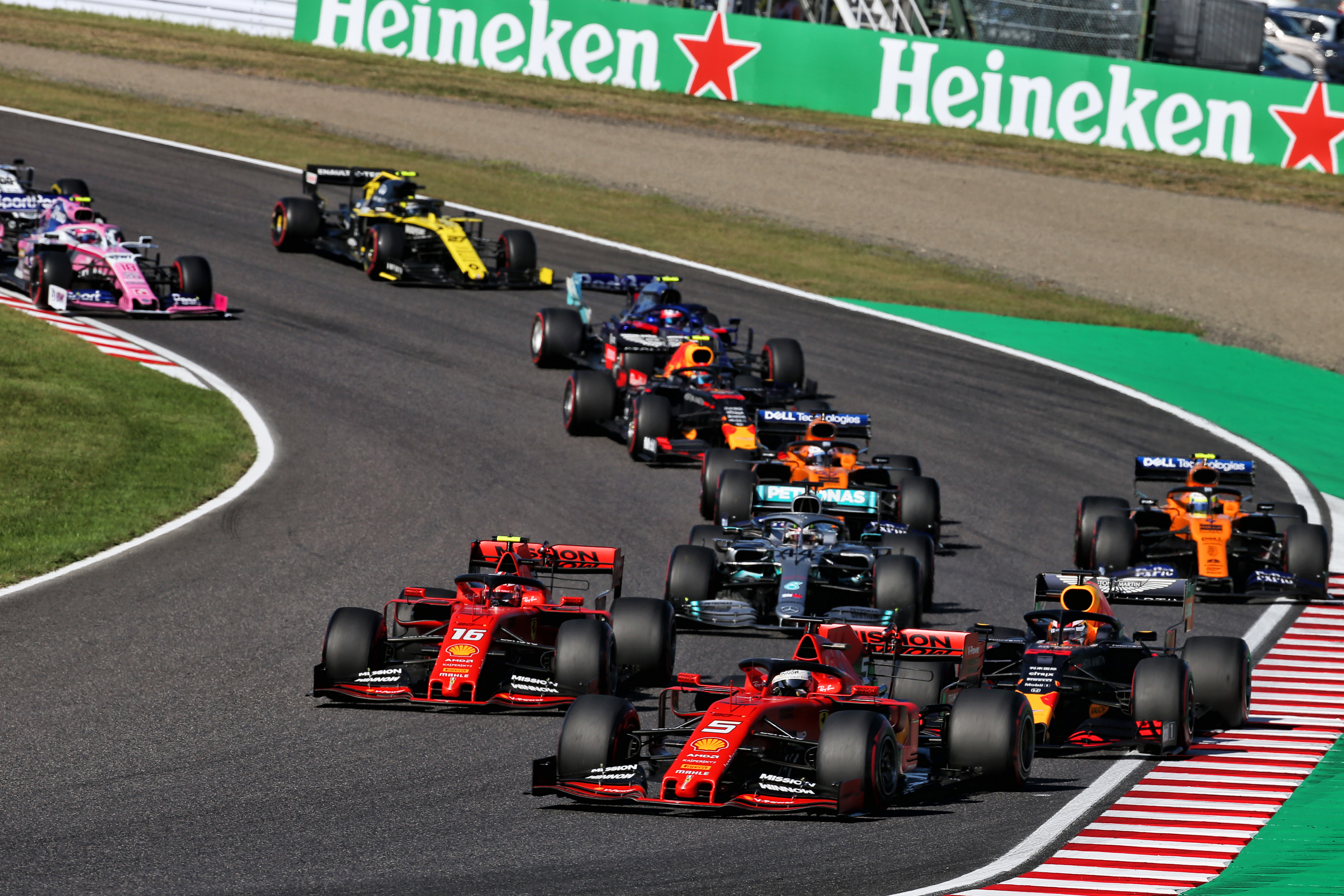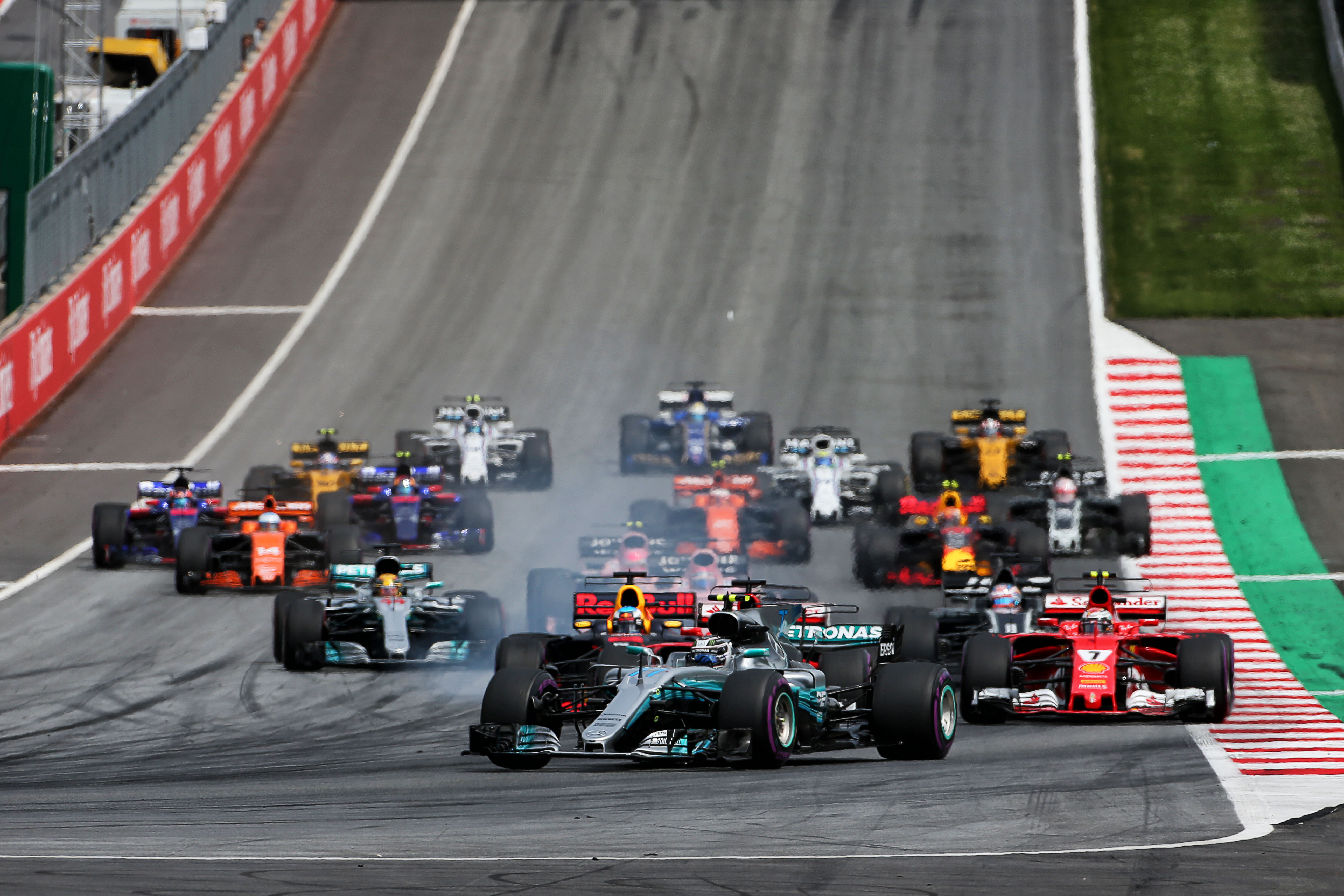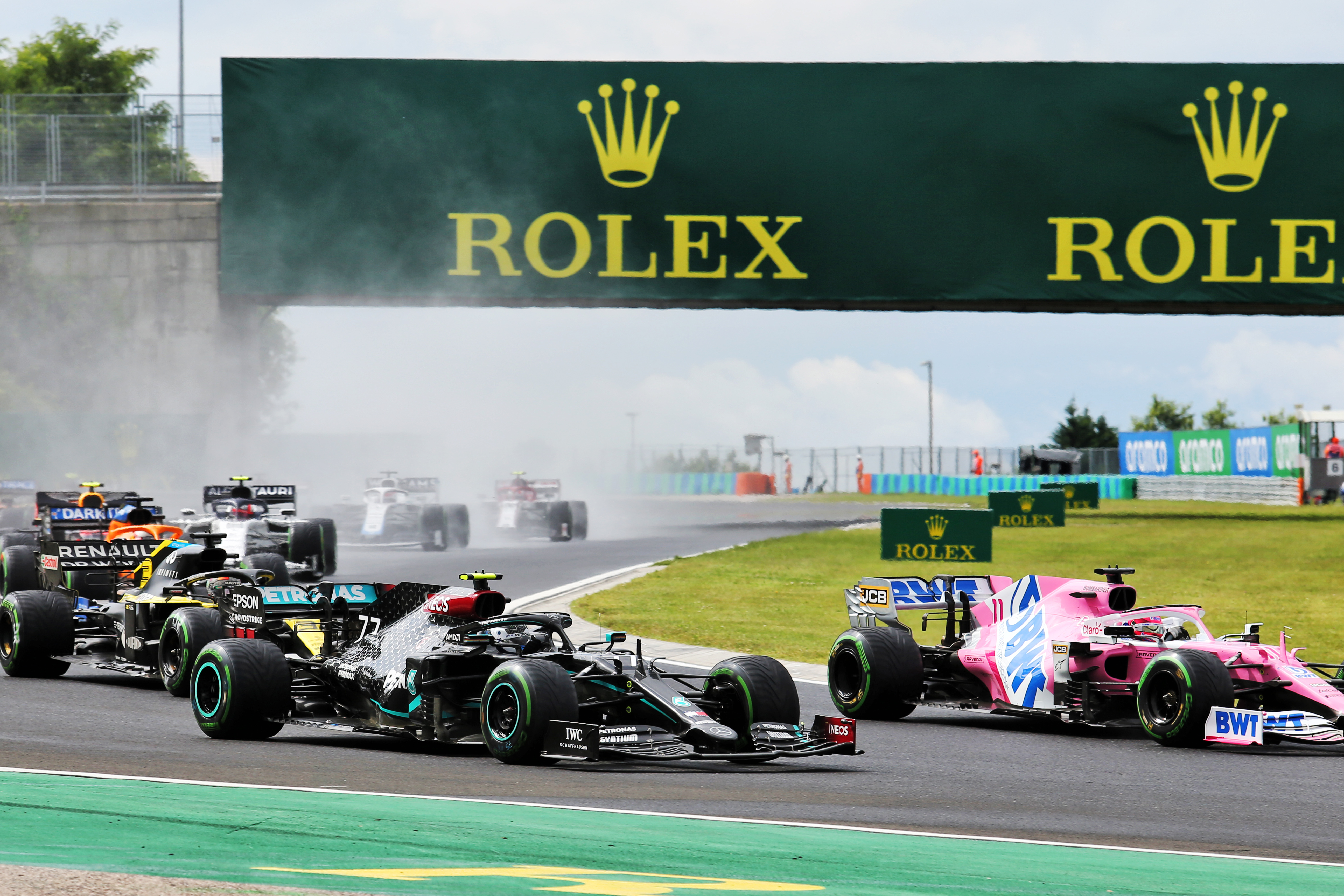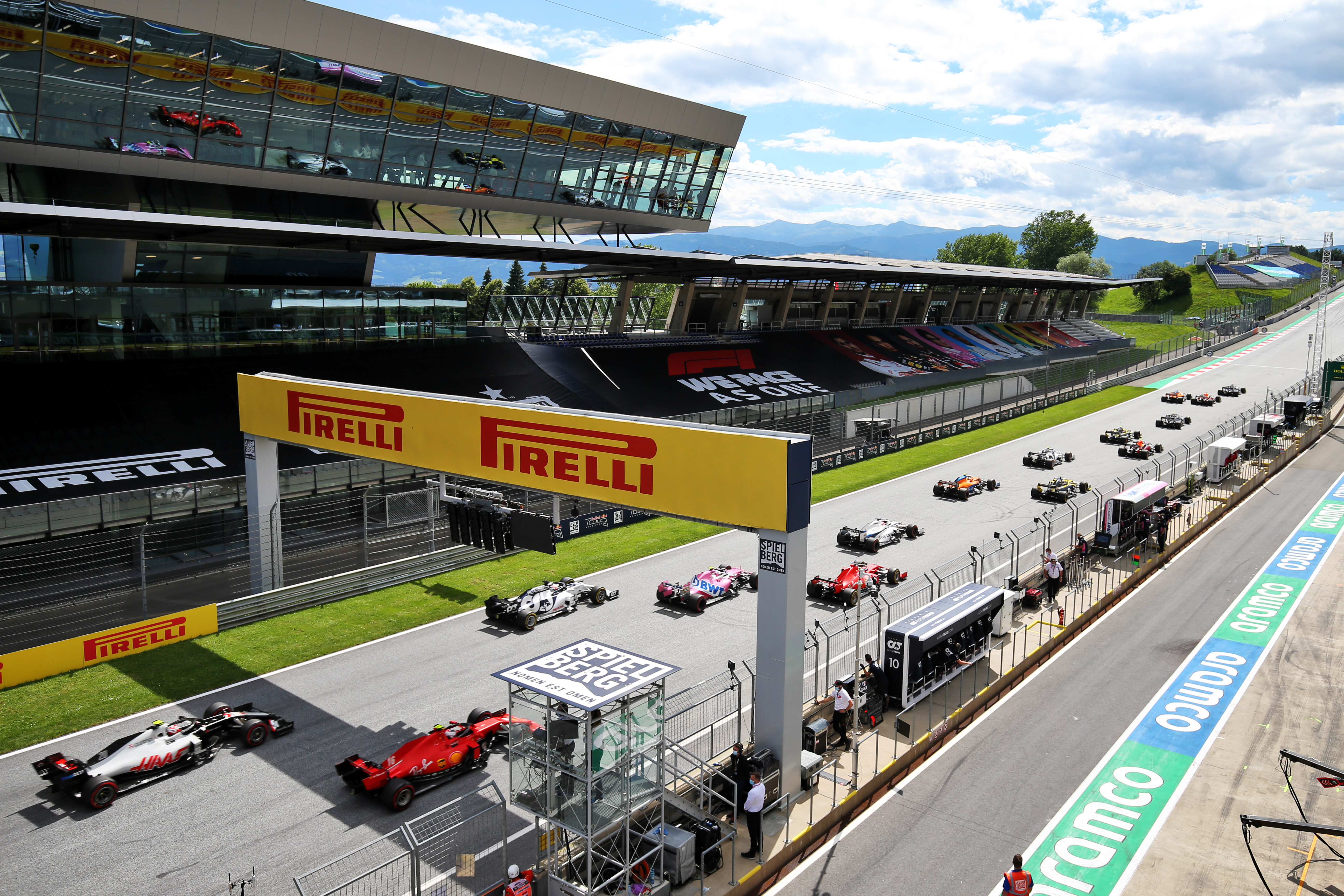Valtteri Bottas escaped a penalty in the Hungarian Grand Prix despite moving before the start because tolerances exist within Formula 1’s jump start system that create a concerning grey area.
Bottas explained after the race that in the crucial moments before the start lights changed, he was confused by lights going out on his steering wheel and consequently momentarily released the clutch on his Mercedes.
However, like Sebastian Vettel in the 2019 Japanese Grand Prix, Bottas was deemed to have not jumped the start because the movement prior to the signal was acceptable based on what the car’s transponder registered.
“The means by which a false start is determined is clearly detailed in the sporting regulations and has been the same process for a number of years,” said FIA race director Michael Masi.
“The transponder that’s fitted to each car is the judgement mechanism and there is a sensor in the road in the track as well.
“And there is a tolerance within that, and as we saw Japan last year, that is the determining factor.

“So there was nothing further to have a look at. We spoke to the timekeepers immediately and they reviewed all the data and that was the end of the matter.”
In Bottas’s case, again as it was with Vettel last year, his premature reaction ended up self-punishing as he fell down the order.
Mercedes team boss Toto Wolff said Bottas “definitely had a disadvantage because moving a bit is not great because you need to basically stop again and then go, and the consequence was ending up whatever it was after the first lap”.
“If someone accelerates past the field down to Turn 1 before the lights have gone out, obviously it’s a very different penalty” :: Michael Masi
It would seem fair not to punish Bottas, or Vettel at Suzuka, given the consequences of their misjudgement.
However, Bottas was arguably on the right side of the tolerance system in Austria in 2017, when rivals were convinced he moved too early but the FIA found he did not trigger the sensor and was deemed to have started after the lights went out. He won that race.

In such rare cases, if Bottas did move within the acceptable tolerances, there is a clear advantage to be gained.
The FIA has already reviewed the false-start regulations for 2020, creating more of a glide path for penalties. Previously a jump start was a drivethrough or a stop-go, enough to wreck a grand prix.
Now there is scope for the stewards to implement a five-second or 10-second time penalty instead.
This introduces a better flexibility into the system to ensure a small infringement is not hit with a draconian consequence.
“If there’s something that’s a minute jump start, or someone accelerates past the field down to Turn 1 before the lights have gone out, obviously it’s a very different penalty that will be imposed,” explains Masi.
This indicates the FIA is keen to improve the system where possible. And an evaluation to see if F1 can shift to zero-tolerance on jump starts, or how much tighter it can be, would be a welcome follow-up.

Mercedes technical director James Allison said that Bottas “didn’t benefit from it, that’s for certain” and as already established this is true, on this occasion.
The tolerance system does work in most cases, because chances are a driver will correct a false start very quickly, pause and then go properly when the lights are extinguished and likely lose out, as Bottas did.
So although self-punishment is not covered in the current regulations, and it remains to be seen if the stewards would decide not to give a penalty to a driver who did breach the transponder tolerance but did not gain an advantage, this is a sensible position to take.
And when aligned with the wider range of penalty options the rules allow as of 2020, the stewards can cover almost every scenario surrounding a jump start.
However, the current tolerance system still leaves one specific problem area, which is an issue when the start has become such an important phase of a grand prix given the lack of overtaking at some circuits.
The tolerance is kept a secret so teams can’t know exactly how much movement is allowed and then try to work out a way to abuse it.
But whether you take a chance of beating the system, or do so accidentally, there is still potential to gain an advantage if that situation lines up perfectly: a slightly early release of the clutch, movement within the tolerance, and no correction that prompts self-punishment.
It creates room for an advantage, or at the very least no disadvantage for judging the start worse than your opposition.

The tolerance supposedly exists to avoid punishing a driver for a clutch adjustment but one could argue this is part of the skill of managing the start. But in athletics, the tolerance exists in the other extreme – moving within a tenth of a second after the starting gun is a false start.
In both disciplines the start is a crucial component, so further scrutiny is clearly achievable.
Zero tolerance in F1 would allow for straightforward judgements from the stewards: a false start is recognised by the system, the stewards can accept self-punishment as sufficient penalty if it occurs, or apply a penalty if they feel a driver has unfairly gained an advantage or avoided a disadvantage.
The risks and rewards mostly remain the same, but a very rare grey area would be eliminated.
As Masi said, this is a long-standing F1 rule and the tolerance has been accepted by competitors for a long time.
But as F1 and technology has evolved, surely the mechanisms around such a crucial part of a grand prix should too.


